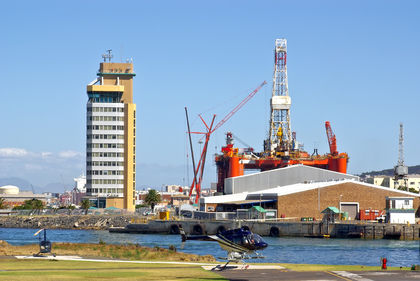Zimbabwe - Mining

Mining was Zimbabwe's leading industry in 2002, contributing 27% of export trade. The chief minerals were coal, gold, copper, nickel, tin, and clay, and Zimbabwe was a world leader in the production of lithium minerals, chrysotile asbestos, and ferrochromium, with more than half of the world's known chromium reserves. Zimbabwe was self-sufficient in most minerals, producing 35 commodities from 1,000 mines, mostly small, and exporting 90% of its mineral output. The total value of mineral production exceeded $500 million per year, and the mining sector employed 60,000 people in formal operations; another 100,000–300,000 were thought to be informally employed intermittently in panning for gold. Of total exports of $1.92 billion in 1999, mineral and manufactured metal exports accounted for $550.8 million, down from $736.6 million in 1995.
The most important mineral was gold, valued at $194 million in 2000, down from $244 million in 1999. Gold was the second-leading export commodity ($230 million), followed by ferroalloys ($166.5 million), nickel ($48.1 million), asbestos ($35.8 million), iron and steel ($12.5 million), black granite as dimension stone, copper, diamond, coal, chromite, tin, and silver. Exports of polished granite were expected to reach $100 million in 2000. Steel production was the second-leading industry in 2002, and the manufacture of cement, chemicals, and fertilizers ranked fourth, fifth, and sixth, respectively.
The year 2000 was a difficult one for Zimbabwe and its mining sector, with a contracting economy, high unemployment, and a 60% inflation rate. The high costs of domestic borrowing, a severe shortage of fuels and spare parts, a foreign currency shortage, and military support for the civil war in Congo started to damage operations, and forced several small mines to close. Moreover, the state-sanctioned expropriation of commercial farmlands threatened to spill over to the mining sector, and the high incidence of HIV/AIDS—25% of the 15–49-year-old population was infected—added substantially to the mining sector's labor costs, through absenteeism, lost productivity, medical treatment, and skill replacement.
Production in 2000 declined by 17%–60% in nine major commodities: chromite, coal, copper, diamond, gold, iron ore, nickel, phosphate, and silver. The gold sector was one of the most affected sectors of the industrial economy in 2000—three major mines and several small operations, including the Connemara, the Eureka, and the Venice mines, closed—and gold production declined for the first time in 20 years. Output was 22,070 kg, down from 27,666 in 1999. Ashanti Goldfields Co. Ltd., of Ghana, had remaining measured and indicated mineral resources at Freda-Rebecca of 15.8 million tons (2.6 grams per ton of gold), of which 5.8 million tons (2.4 grams per ton of gold) were proved and probable. Ashanti was also exploring the nearby RAN gold-copper property.
Output of other major minerals included chromite (gross weight), 725,000 tons; asbestos, 145,000 tons, down from 165,000 in 1996; mine copper concentrate (metal content), 2,104 tons, down from 10,000 in 1996; nickel, 8,160 tons, down from 11,164 in 1999 and 12,963 in 1997; lithium minerals (gross weight), 41,957 tons, down from 49,833 in 1997; granite, 130,000 tons, up from 109,903 in 1997; diamond, 16,678 carats, down from 421,307 in 1997; iron ore (metal content), 225,000 tons, down from 300,000 in 1999; and marketable phosphate rock concentrate, 110,000 tons, down from 126,000 in 1999. The Madziwa nickel mine was closed down in 2000, the Mhangura Copper Mines were near depletion, and Munyati Copper Mines Ltd. suspended operations in 2000, following its abandoned sale. In the late 1960s and early 1970s, copper replaced gold and asbestos as the most valuable mineral, but its production has not kept pace with other minerals. Zimbabwe also produced iron ore, palladium, platinum, rhodium, selenium, silver, tin, barite, hydraulic cement, clays (including montmorillonite bentonite and fire clay), emerald, feldspar, graphite, kyanite, limestone, magnesite, mica, nitrogen, phosphate rock, quartz (including silica sand), sulfur, talc, and vermiculite. National PGM metal production fell by 80% from 1998. No antimony, lead, zinc, or iron oxide pigments was produced in the past several years.
Gold panning was legal, but, by the Gold Trade Act, the Reserve Bank of Zimbabwe had a monopoly on purchasing and exporting of all gold and silver produced in the country. The revised code also permitted unlimited foreign exchange to companies that exported more than 75% of their production, and mining companies were allowed to keep 5% of their export earnings, to buy imported raw materials. Coal deposits in the Hwange area were substantial.
Excess government intervention in the economy and in state-run industries has been a major contributor to the growing number of closed mines and suspended projects, undermining the ability of the mining sector to generate more than 25% of export earnings. The government has been making efforts to privatize its interests in the energy, mining, and rail sectors, and to loosen its foreign exchange rules. Although the short-term outlook was not favorable, the natural resource endowment and a well-developed infrastructure remained in place.
God bless you! The world is aware that you were created and born rich.